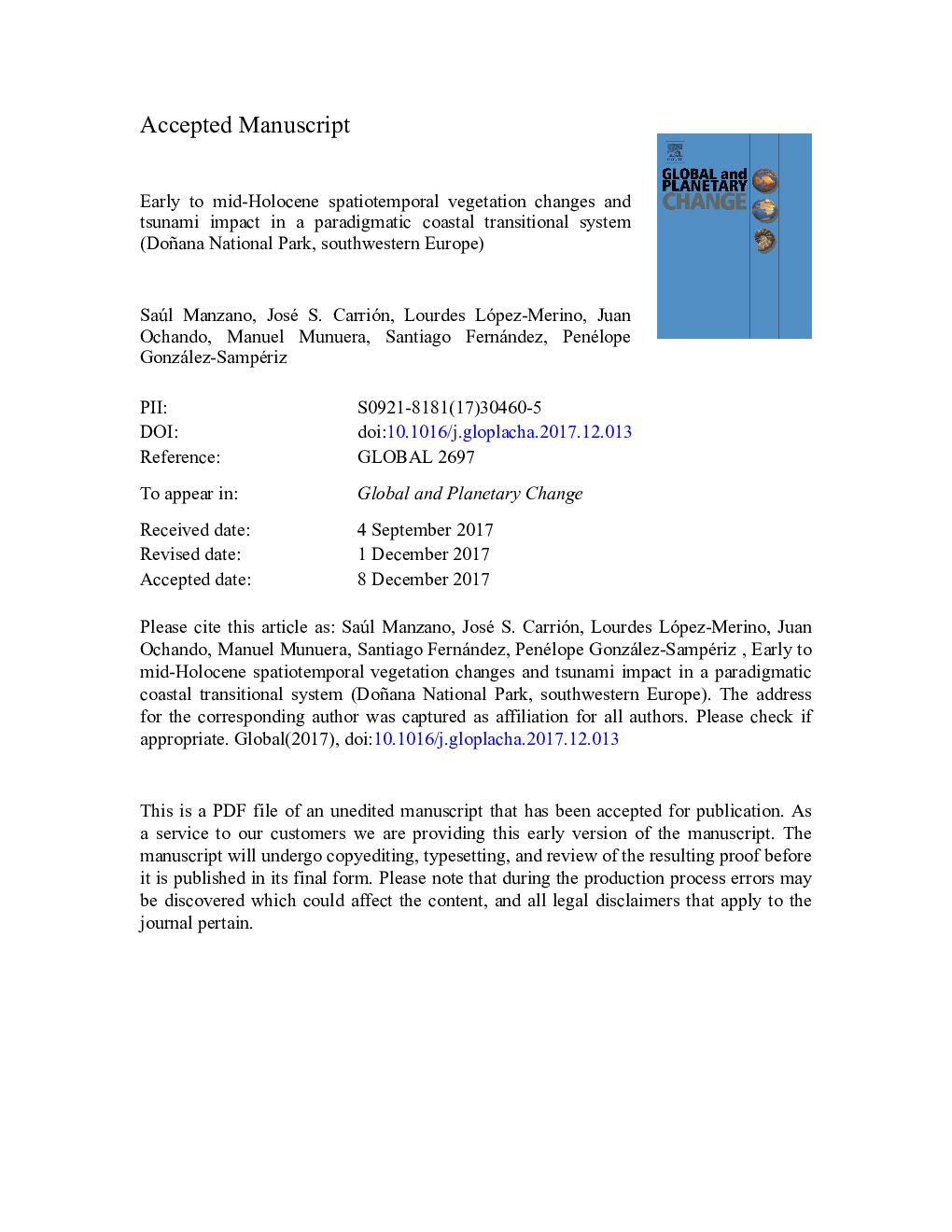| Article ID | Journal | Published Year | Pages | File Type |
|---|---|---|---|---|
| 8867609 | Global and Planetary Change | 2018 | 64 Pages |
Abstract
The southern European Doñana wetlands host a highly biodiverse landscape mosaic of complex transitional ecosystems. It is one of the largest protected natural sites in Europe, nowadays endangered by intensive agricultural practices, and more recently tourism and human-induced fires. Its present-day spatial heterogeneity has been deeply investigated for the last three decades. However, a long-term perspective has not been applied systematically to this unique landscape. In this new study, a palaeoecological approach was selected in order to unravel patterns of landscape dynamism comparing dry upland and aquatic ecosystems. A 709 cm-long sediment core was retrieved and a multi-proxy approach applied (palynological, microcharcoal, grain size, magnetic susceptibility, loss-on-ignition and multivariate statistical analyses). Pollen signatures show how sensitive aquatic wetland vegetation was to environmental changes while terrestrial vegetation was stable at millennial scale. The impact of several high energy events punctuates the Early and Middle Holocene sequence, two of which relate to the local tsunami record (~ 6.6 and ~ 9.1 cal. kyr BP). Contrasting impacts of these two events in the aquatic and upland ecosystems show the importance of landscape configuration and the contingent history as key elements for coastal protection.
Related Topics
Physical Sciences and Engineering
Earth and Planetary Sciences
Earth-Surface Processes
Authors
Saúl Manzano, José S. Carrión, Lourdes López-Merino, Juan Ochando, Manuel Munuera, Santiago Fernández, Penélope González-Sampériz,
